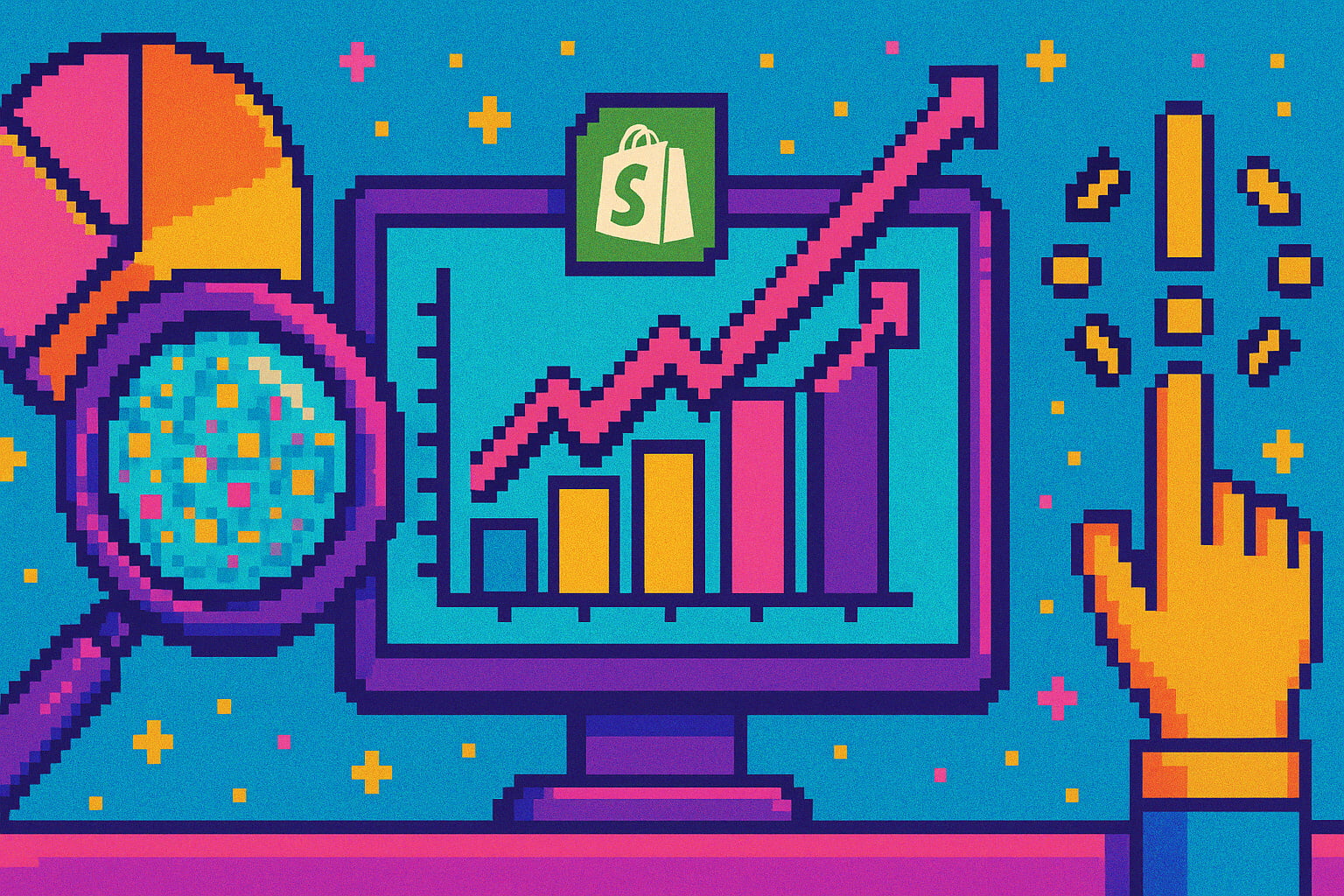AnalyticsOct 23, 2025
Predict Your Next Shopify Bestseller with 3 Data Signals

When a product takes off, it’s already too late to react. On Shopify, the teams that get ahead of the market aren’t guessing—they’re reading the signals before anyone else.
In this article, you’ll learn how to predict your next Shopify bestseller using three key data indicators that reveal real demand early. You’ll also get a quick framework to score product potential, a 24-hour validation checklist, and a short case study with measurable results.
Table of Contents
The 3 signals that predict a bestseller
1. Early qualified traffic
Definition: This is the initial flow of visitors coming from organic or paid channels who match your product’s target audience. It’s not about volume but quality—users who are likely to buy.
How to measure it: From your Product Analytics, filter new visitors landing on the product page with clear commercial intent (time on page > 30s, scroll depth > 50%, no bounce).
Suggested thresholds:
+200 qualified visits in 48h → early signal
+3% CTR from ads or email → real interest
+20% returning traffic → early validation
Example: A skincare brand noticed that a new serum reached 240 qualified visits during its first weekend after a newsletter launch. The product outperformed average sales by 3x in one week and became its bestseller of the quarter.
2. Microconversions: the pulse of intent
Definition: These are the actions that precede a purchase—adding to cart, saving as favorite, viewing reviews, or interacting with variants. They signal intent before sales happen.
How to measure it: In your Collection Optimization dashboard, track metrics like:
% of products added to cart without purchase
View-to-add-to-cart ratio
Repeat visits to the same product
Suggested thresholds:
+15% add-to-cart rate → strong intent
1:3 view/add ratio → high potential
2+ repeat visits → validated interest
Example: An accessories brand saw that a handbag reached an 18% micro conversion rate before sales even started. They increased stock, optimized pricing, and within 10 days the product climbed into their top 5 sellers.
3. Search and engagement trends
Definition: This measures how interest around a category or keyword evolves—both inside and outside your store.
How to measure it:
Google Trends or internal Shopify search
Social mentions or engagement with product content
Ad and newsletter interactions
Suggested thresholds:
+30% weekly increase in searches → emerging trend
2x average engagement on ads or stories → viral signal
+40% click rate in emails → validated interest
Example: A home decor store spotted a spike in searches for “wood wick candles.” They launched early, optimized their listings, and achieved 2.8x higher ROI than their monthly average.
Quick framework to score potential
You can predict a bestseller using a simple formula that weighs the three key signals:
> 75 points:
scale aggressively (bestseller potential)
50–75 points:
keep testing, optimize price/photos
< 50 points:
pause or reposition the product
With the AI Assistant, teams make decisions 10x faster, saving up to 8 hours per week of manual analysis. On average, stores applying this framework uncover $24k–$42k/month in new opportunities.
24-hour validation checklist
Identify products with traction
in your analytics (last 7 days).
Filter for qualified traffic
and ignore irrelevant campaign spikes.
Check micro conversions:
add-to-cart, repeat views, scroll depth.
Cross-check with external trends
on Google or social media.
Launch or feature the winner
on homepage, ads, and email.
In less than a day, you’ll have validation backed by real data not intuition.
Short case study
A sustainable accessories store implemented this system using the integrated AI Assistant in their analytics. Before: 42 active products, no clarity on which to scale. After 7 days:
Identified 2 products scoring above 80
Focused ad spend only on those items
Achieved
2.8x higher conversion
and generated
$36k in extra opportunities
that month
Today, those products account for 42% of monthly revenue.
Try the power of data
Predict your next bestsellers before your competitors. Activate the AI Assistant and connect your Product Analytics to reveal hidden product potential.
Frequently Asked Questions (FAQs)
What does “predicting a bestseller” mean in Shopify? It means identifying products that show clear signs of demand and sales potential before the market becomes saturated.
What tools do I need to measure these signals? You only need Shopify’s Product Analytics and an AI Assistant that connects traffic, microconversion, and trend data.
How often should I check demand signals? Every 48–72 hours during a test or launch phase to detect winners early before scaling spend.
Can I apply this method to large catalogs? Yes. The framework is designed to automate scoring across big catalogs and surface the products with the highest potential.
What results can I expect? On average, ecommerce stores using this approach make decisions 10x faster, save up to 8 hours per week, and see conversion improvements of up to 2.8x by prioritizing winning products.